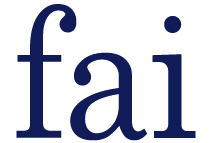1. Financial Inclusion: This week, InterMedia released the results of its research on digital financial inclusion within eight of the poorest countries across Africa and Asia, focusing on gender divides, customer engagement, and financial behaviors. Financial Inclusion Insights
2. Mobile Money: Data from 2014 reports 13.4 million registered bKash accounts in Bangladesh...but only 5.1 unique users. A deeper look at agent and user behavior begins to explain this 8 million user gap. World Economic Forum
3. Gender and Development: "Not to empower these missing men is to condemn the poor woman in their lives to have to do absolutely everything for their families, from making all the money to changing all the diapers. Is that right or fair?" CFI
Week of April 27, 2015
1. Impact Investing: There's no clear definition of "impact investing," made apparent by the US Council on Foundations' annual conference and the Milken Institute Global Conference both having impact investing tracks this week populated by quite different people. Read Tim Ogden's reflections from the Council on Foundations (Part 1, Part 2 and Part 3) where the emphasis was on starting small, and Jean Case's take on Milken Institute's theme of going big.
2. Microinsurance: Does the microinsurance industry have anything to show after 10 years of experiment, investment and excitement? Not much, according to Peter Gross. CGAP
3. Remittances: Since their initial launch two years ago, Orange and MTN's cross-border mobile money transfer services have exhibited rapid adoption rates and transfer activity in West Africa. Does this success signal potential disruption in the African remittance market or does the preexisting socioeconomic integration of the region make this a unique case? GSMA
Week of April 13, 2015
1. Commitment Savings: FAI's Managing Director Timothy Ogden discusses the world’s largest and most successful commitment savings program for low-income households - the US tax system.
2. Financial Inclusion: The number of "unbanked" individuals dropped 20% between 2011 and 2014 to 2 billion adults, according to the recently released Global Findex report.
3. Impact Evaluations: "The debate cannot stop with whether or not transformation has occurred... The debate has to include how we define transformation and how we measure it...If there is no silver bullet for reducing poverty, neither does there appear to be a silver bullet for measuring transformation."
Read MoreWeek of April 20, 2015
1. Digital Consumer Protection: Last week we learned about the drivers of demand for M-Shwari. This week, a follow-up post takes a deep dive into customer's understanding of the service, including risk, privacy, security, and terms of use. CGAP
2. Business Training: Research on business training rarely picks up significant effects. A team of business school researchers look at what happens if a training program is more targeted both in participant selection and in curriculum. International Growth Centre
3. Labor Markets: Issues of asymmetric information and the prevalence of gender-based violence in some areas may be contributing to why women are "missing" from rural labor markets. Microlinks
Week of April 6, 2015
1. Digital Payments: A body of research contains evidence that people spend more with credit cards than cash because the former reduces the "pain of paying." Do mobile wallets like Apple Pay increase or relieve this pain?
2. G2P Transfers: The US doesn't drug test farmers receiving crop subsidies or requirePell Grant recipients to limit their field of study - so why do the poor have to prove they are worthy of aid?
3. Mobile Money Agents: Agents in Uganda use creative ways to "bend the rules" in order to meet the needs of a diverse customer base.
Week of March 30, 2015
1. Microfinance: FAI’s Jonathan Morduch discusses the limitations of microfinance, the promise of new technologies, and the need for quality, effective financial services for the poor. The Wall Street Journal
2. Student Debt: A burgeoning student loan repayment strike is gaining attention from the US government. It bears a striking resemblance to microcredit repayment crises, with much bigger implications: the US government guarantees billions in student debt.The Washington Post
3. MFI Transparency: Microfinance Transparency announced that after six years, it will no longer continue collecting global MFI pricing data. CEO Chuck Waterfield explains what led to that decision and what it means for industry transparency. NextBillion
4. Social Impact Bonds: "[E]ven skilled nonprofits and intermediaries will have trouble translating great ideas into contracts that really provide the right incentives. When you look at how the parties do the accounting, how they measure "savings,"... it gets inelegant, to say the least." Chronicle of Philanthropy
5. Remittances: Understanding the behavioral mechanisms behind migrants' decisions to use specific transfer services (both formal and informal) can potentially inform the design of more effective services for the poor. MicroSave
Week of March 23, 2015
1. Ultra-Poor Programs: A newly published paper from Jonathan Bauchet, Shamika Ravi, and FAI's Jonathan Morduch looks at "ultra-poor" programs and how labor markets affect outcomes. Journal of Development Economics (paywall)
2. Development Research: Couldn't make it to Oxford's 2015 CSAE conference? No worries, David Evans provides a round up of the sessions, neatly summarizing and categorizing papers in two (or fewer) sentences. The World Bank: Development Impact
3. Mobile Money: Will agents become a permanent part of mobile money or are they the equivalent of training wheels? GSMA
4. Product Innovation: In crowd-sourced innovation news, the 2015 Innovation Fund for Mobile Money Challenge is officially open and OpenIdeo has a current challenge focused on financial empowerment and inclusion. NextBillion and Ideo
5. Savings: Why do 75% of Kenya's PostBank youth savings accounts remain dormant? The answer may lie with how involved young people are (or are not) in intra-household financial management. World Savings Bank Institute
Week of March 16, 2015
1. Savings Groups: In an evaluation of savings group outreach programs in Kenya, NGO-led groups had better attendance rates, saved more, had larger payouts, and lower rates of reported loss than groups formed spontaneously. FSD Kenya
2. Mobile Money: Kenya may be the current media darling when it comes to mobile money, but Tanzania's success story is due for its share of the spotlight. CGAP
3. Poverty in the US: "Our economy increasingly requires that people be flexible in the workplace, understand more complex processes, and communicate and work well with others. As consumers, many people living in poverty aren’t prepared to manage all the choice and temptations in the marketplace, such as mortgages, auto loans, and cell-phone plans." Stanford Social Innovation Review
4. Sharing Economy: Will low-income consumers benefit most from new peer-to-peer rental marketplaces or will they face barriers to growth and prosperity as microentrepreneurs? The Washington Post
5. Payments: Facebook announced it is adding a payments feature to its messenger app that allows American users to link their debit cards to the service and send money as easily as sending text. The New York Times
Week of March 9, 2015
1. Peer Lending: A new study reports lenders in online peer-to-peer lending models were able to predict a borrower's credit worthiness with 45% more accuracy than traditional credit scoring. NextBillion
2. Microcredit: Growing incidences of over-indebtedness in Cambodia are causing some to worry the country may face the next microfinance crisis. Is Cambodia the new Chiapas or can regulation cool down the market? The Guardian
3. Financing for Entrepreneurs: If you've ever traveled to major cities in East Africa, you may have dealt with the economics of the boda-boda while bargaining for a good fare rate. But drivers who rent their bikes pass on almost all profits to a "bike lord." A new business model offers drivers lease-to-own financing combined with elements of group lending. How We Made It In Africa
4. Tax Refund: While many Americans report on surveys they will use their expected tax refund to save or pay down debt, there is some evidence these responses are more aspirational than reflective of actual behavior. (Learn more about what US Financial Diaries researchers learned about tax refunds and financial behavior here.) Marketplace
5. Mobile Money: A recent collusion scandal in Uganda illustrates that internal fraud is a much more serious risk that individual end user fraud in mobile money systems. CGAP
Week of March 2, 2015
1. Mobile Banking: The newly released report, State of the Industry 2014: Mobile Financial Services for the Unbanked, shows 255 mobile money services are now live across 89 countries and the number of registered mobile money accounts globally grew to just under 300 million in 2014. GSMA
2. Health: "When you ask people what impacts health you'll get a lot of different answers: Access to good health care and preventative services, personal behavior, exposure to germs or pollution and stress. But if you dig a little deeper you'll find a clear dividing line, and it boils down to one word: money." NPR
3. Payday Lenders: Some two dozen Native American tribes are trading casinos and cigarettes for payday loans. The new lending ventures bring in much needed revenue for many reservations - but at what cost to borrowers? The Washington Post




